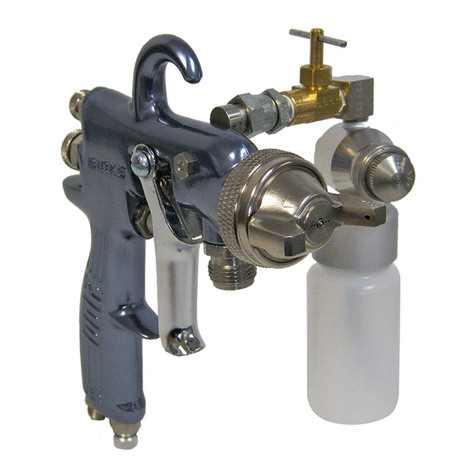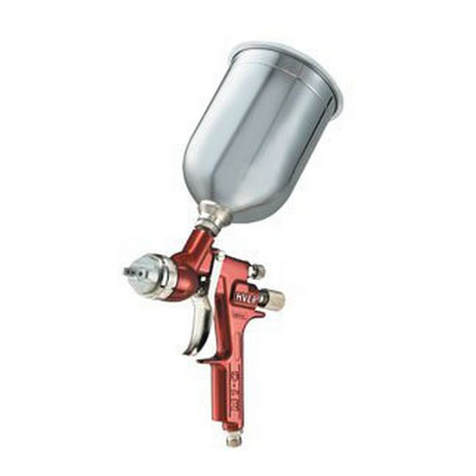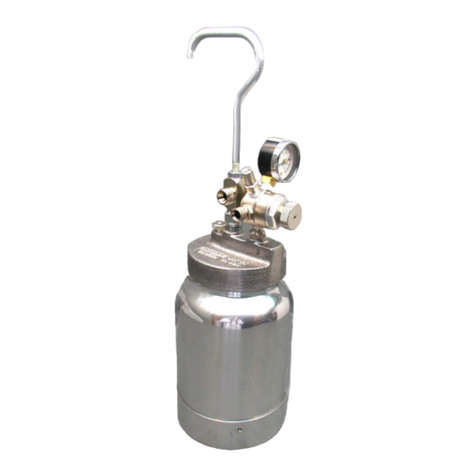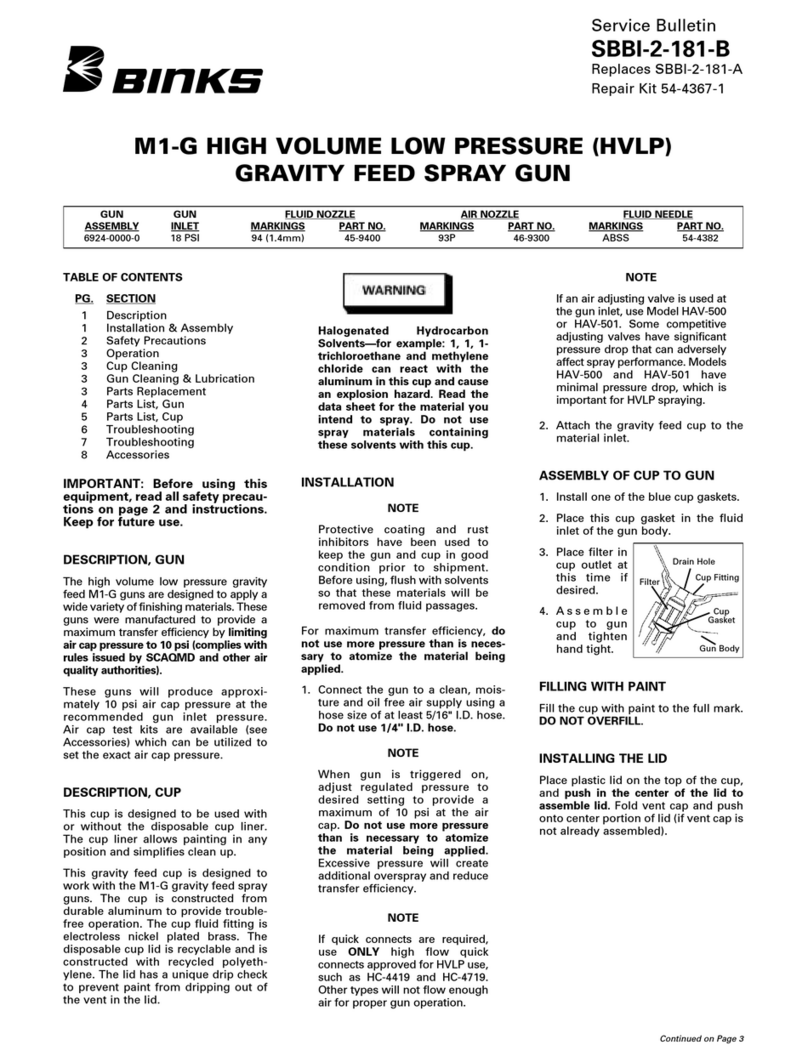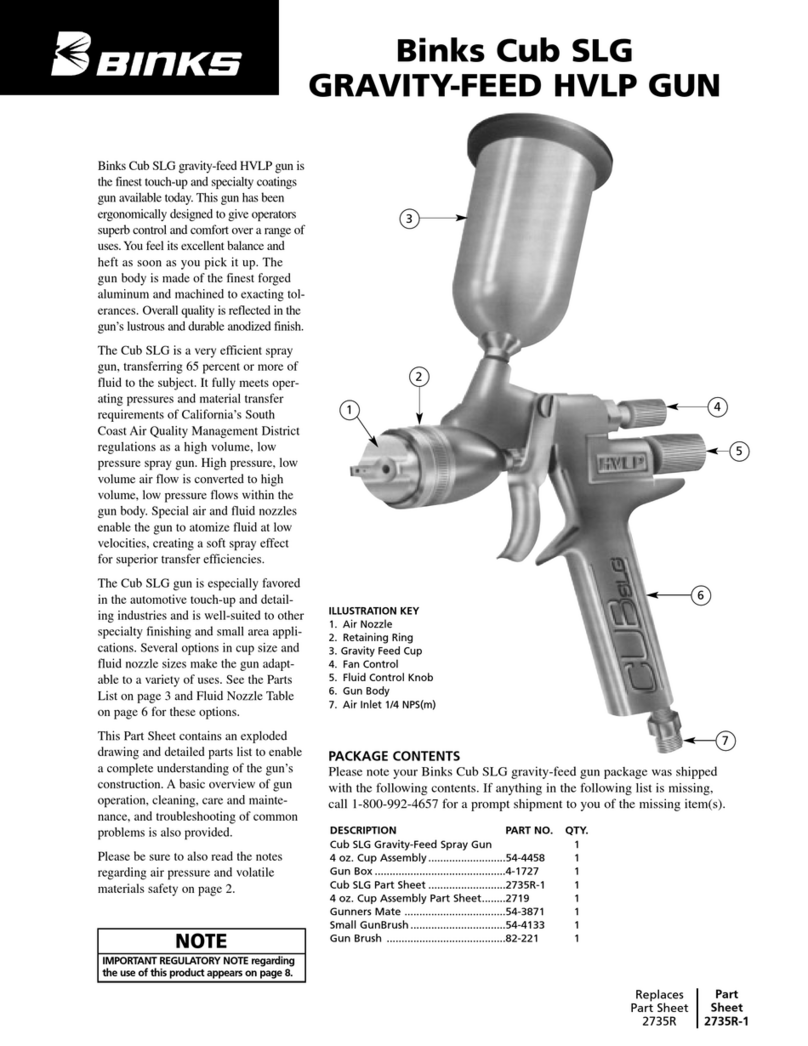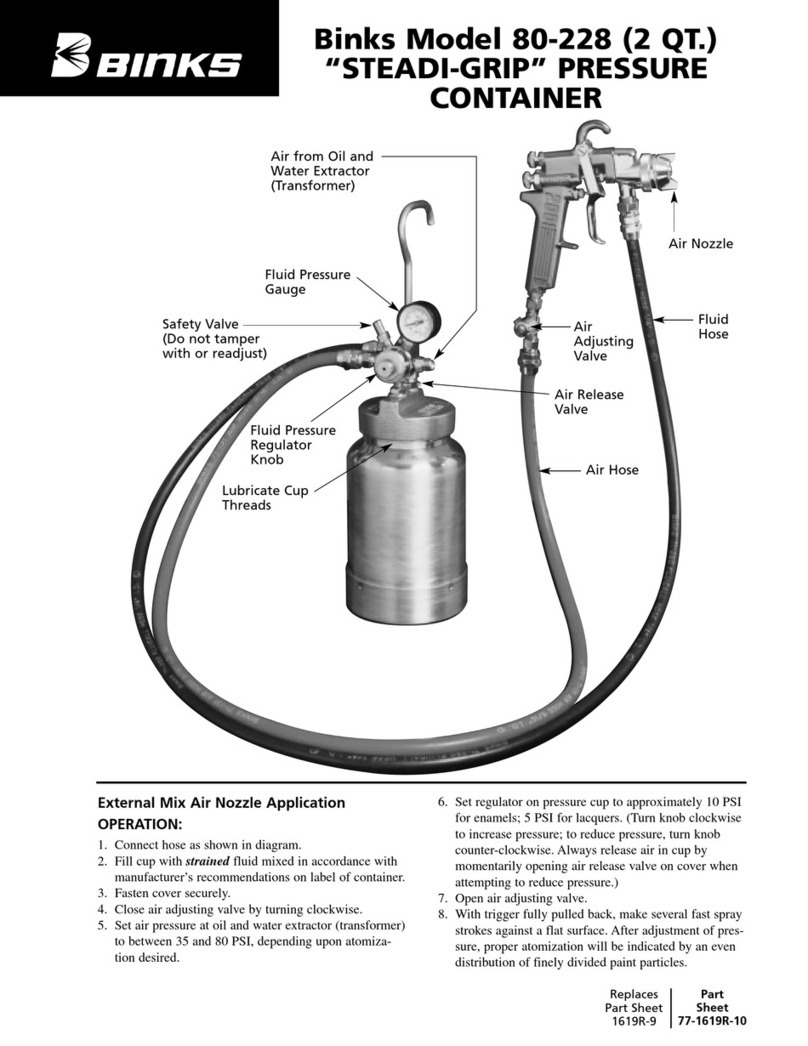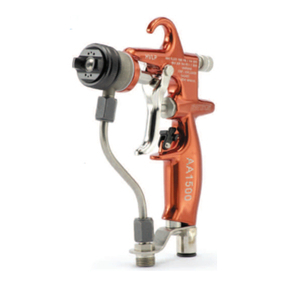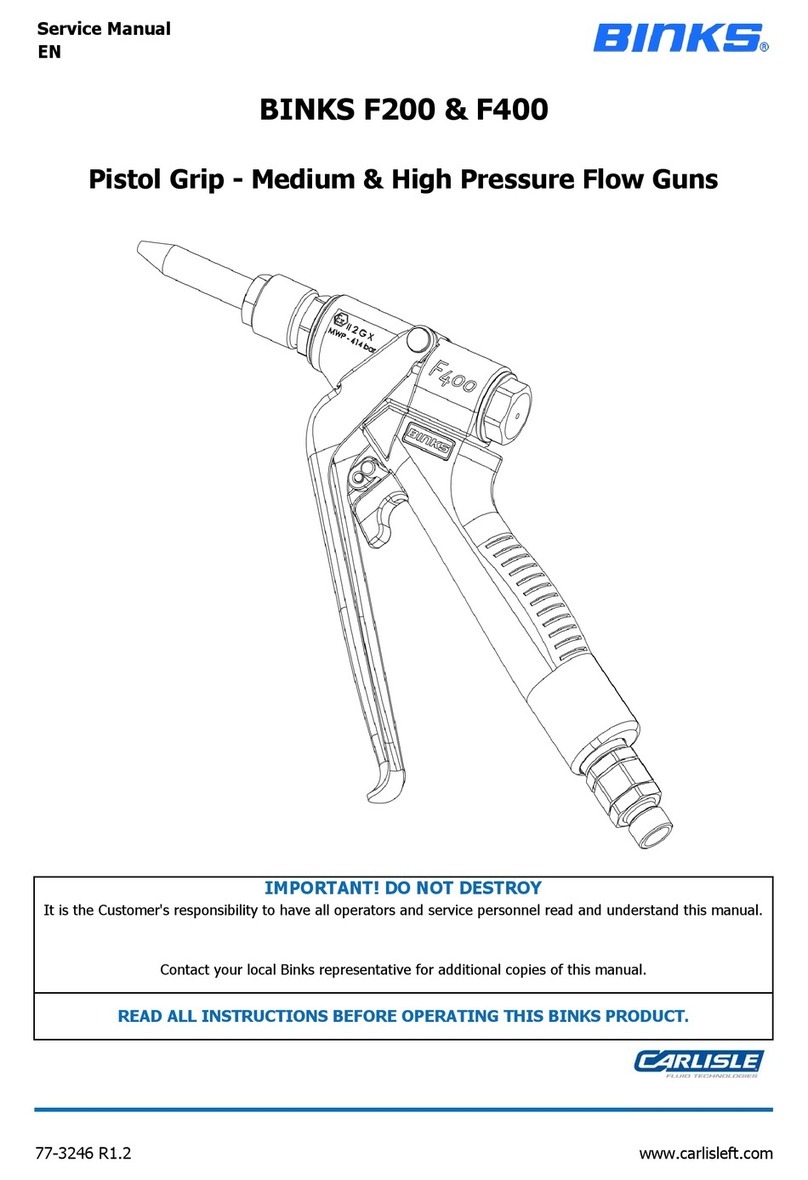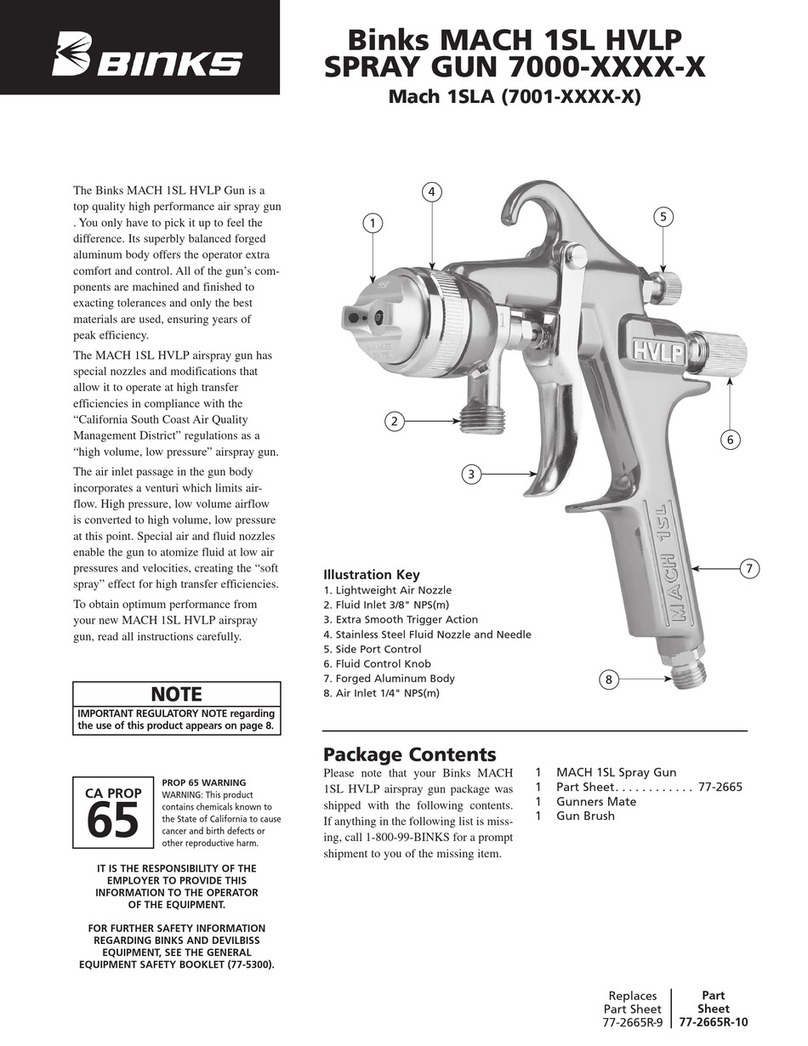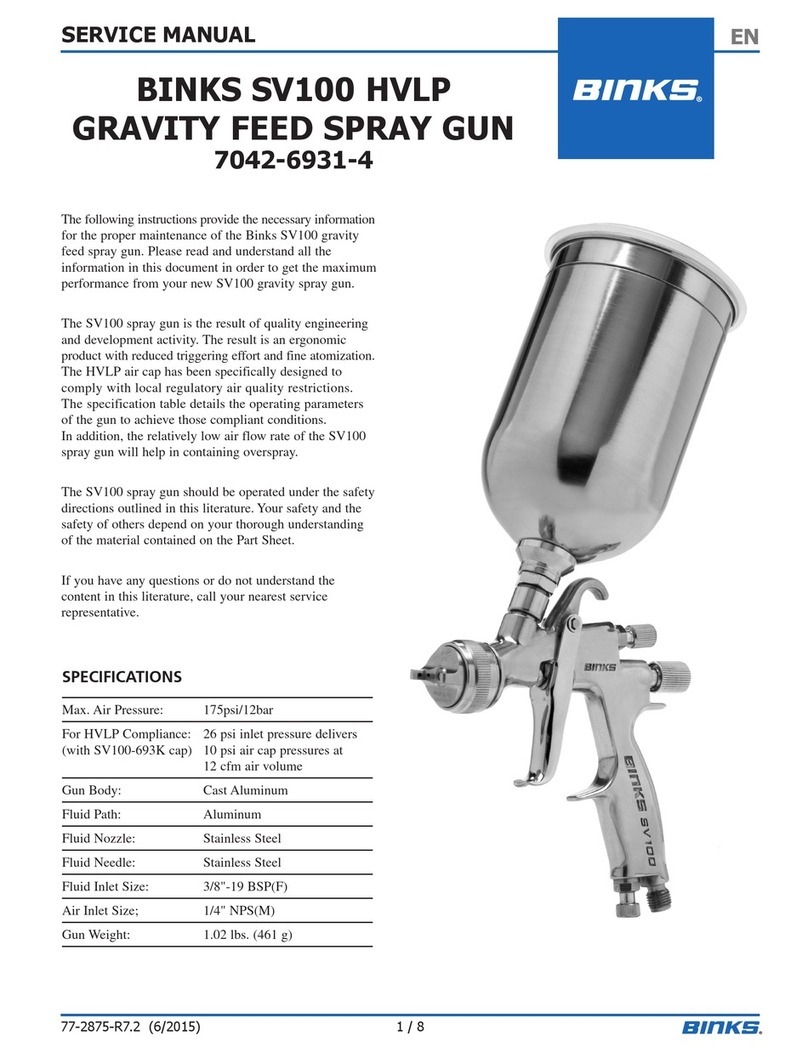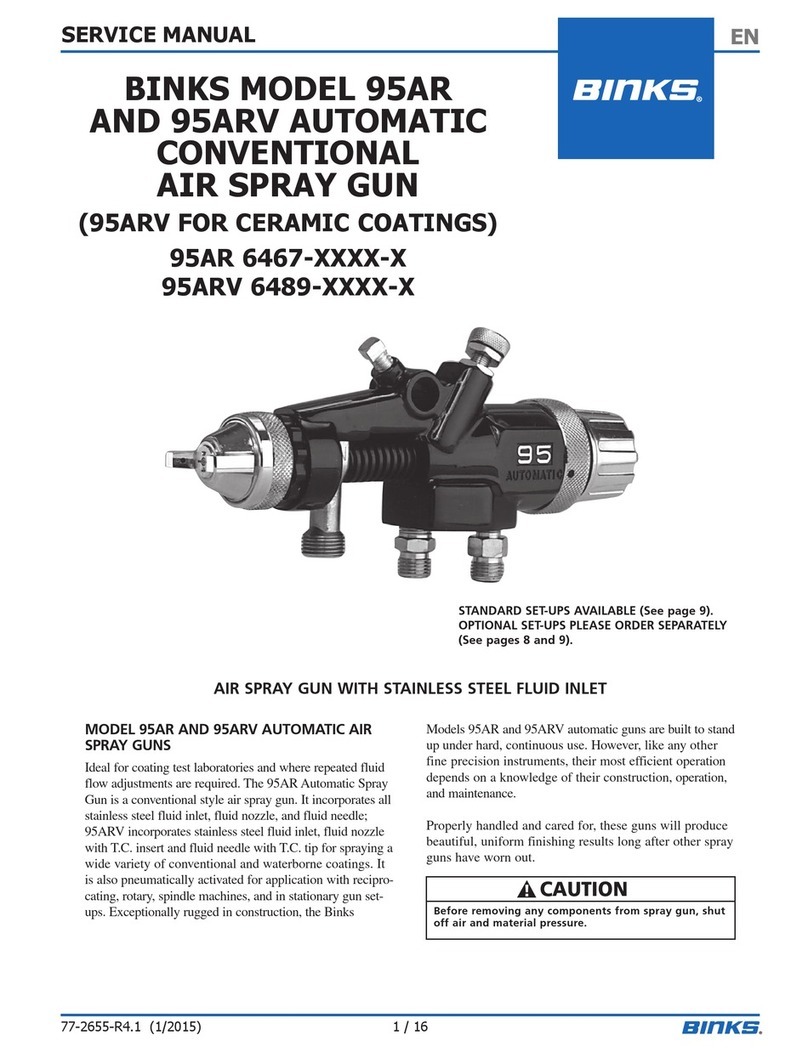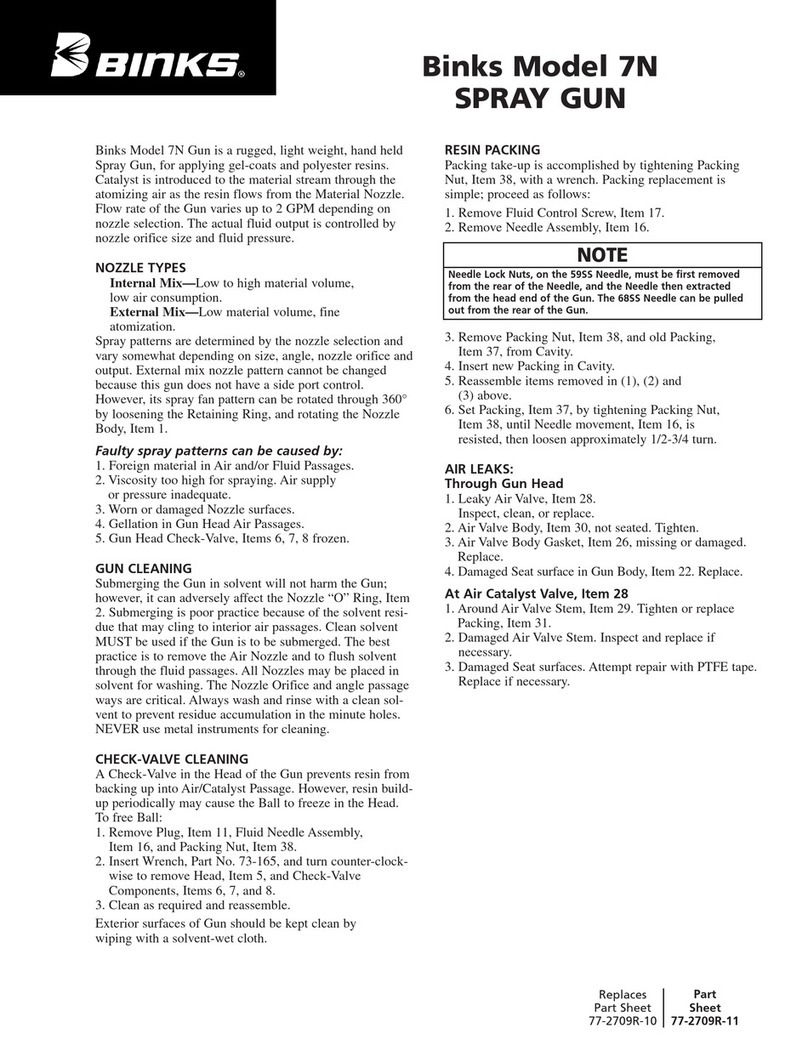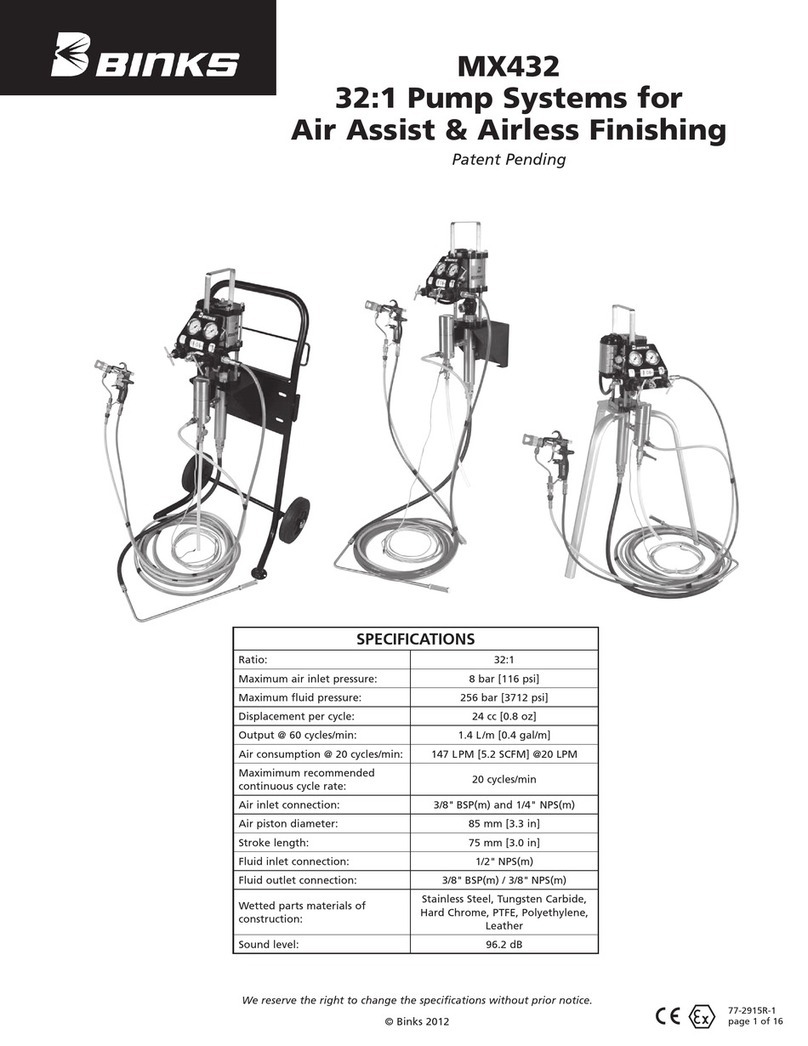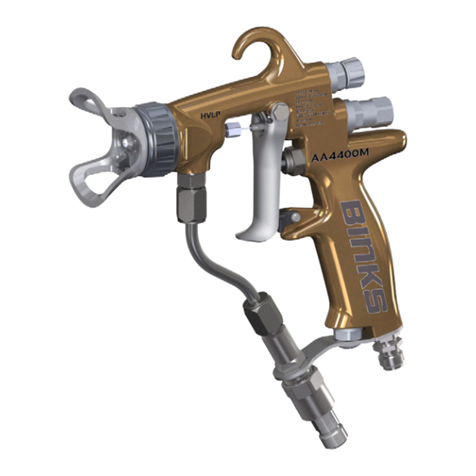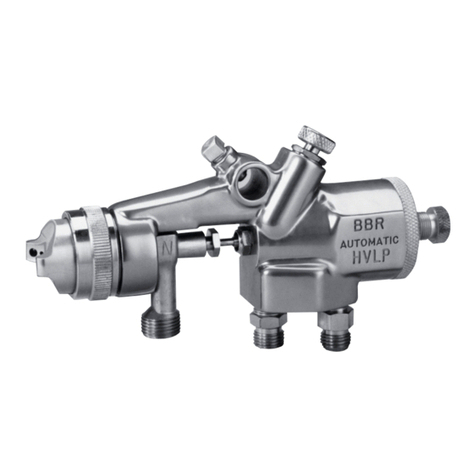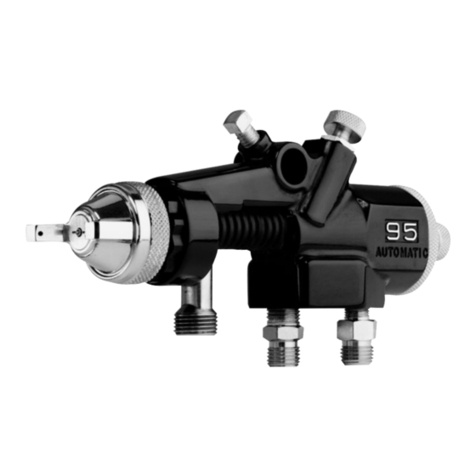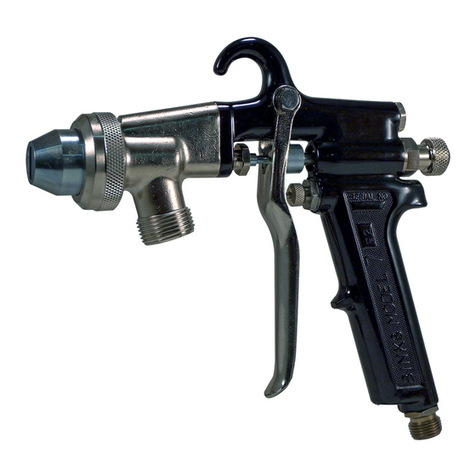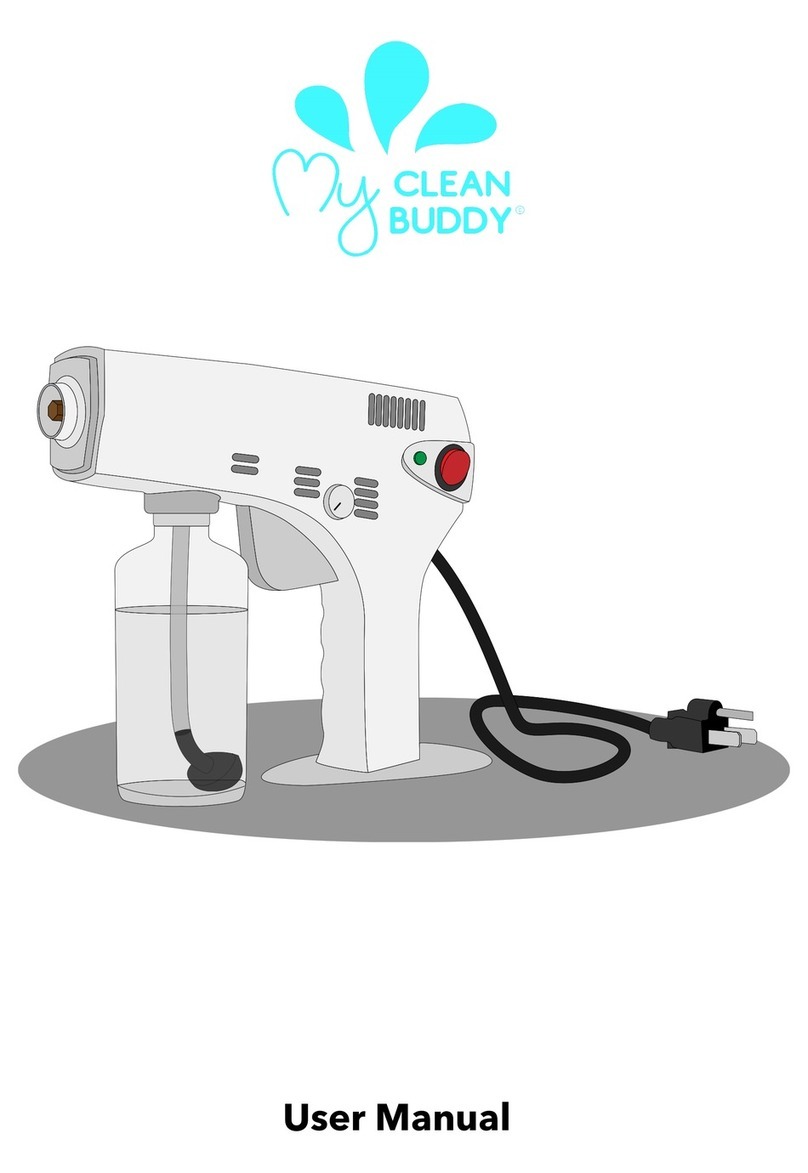2
INJECTION HAZARD
Spray from the gun, hose leaks, or ruptured components can inject fluid into
your body and cause extremely serious injury, including poisoning or the need
for amputation. Splashing fluid in eyes or on skin can also cause a serious injury.
• Fluid injected into the skin might look like just a cut, but is a serious injury and
should be treated as such. GET IMMEDIATE MEDICAL ATTENTION. INFORM THE
PHYSICIAN WHAT TYPE OF MATERIAL WAS INJECTED.
• Do not point the spray gun at anyone or any part of the body.
• Do not put fingers or hand over the spray tip.
• Do not stop or detect fluid leaks with a rag, hand, body or glove.
• Do not use a rag to blow back fluid. THIS IS NOT AN AIR SPRAY GUN.
• Engage the gun safety when not spraying.
• ALWAYS RELIEVE THE PRESSURE WHENEVER WORKING ON THE SPRAY GUN.
• Tighten all fluid connections before operating equipment.
• Check all hoses, tubes, and couplings daily. Replace all worn, damaged, or
loose parts immediately.
Hazardous fluids or toxic fumes can cause serious injury or death if splashed on
skin or in the eyes, swallowed or inhaled.
TOXIC FLUID HAZARD
• Know the specific hazards of the fluid you are using. This information is on the
MSDS for the material being used. Read all fluid manufacturer’s warnings.
• Store hazardous fluids in approved containers only. Dispose of all hazardous
fluids in accordance with all state, local and national guidelines.
• Wear the appropriate protective clothing, gloves, eyewear and respirator.
Equipment misuse can cause the equipment to fail, malfunction, or start unex-
pectedly and result in serious injury.
EQUIPMENT MISUSE HAZARD
• This equipment is for professional use only.
• Read and understand all instructional manuals, tags, and labels before operat-
ing equipment.
• Use the equipment only for its intended purpose. If you are unsure about its
purpose call your local Binks distributor.
• Do not alter or modify this equipment. Use only genuine Binks parts.
• Do not exceed the maximum working pressure of the lowest rated system
component. THE MAXIMUM RATING OF THE AA4000 IS 4000 PSI (275 BAR)
FLUID PRESSURE. DO NOT EXCEED THE FLUID PRESSURE RATING.
• Route all hoses away from all sharp edges, moving parts, hot surfaces and
high traffic areas.
• Do not use hoses to pull the equipment.
• Use only Binks approved hoses. Do not remove spring guards from hoses,
these are on the hoses to prevent rupture from kinking at the connectors.
• Use only solvents compatible with hoses and wetted parts of the equipment
used.
• Comply with all applicable local state and national fire, electrical, and other
safety regulations.
Improper grounding, poor air ventilation, open flames, or sparks can cause a
hazardous condition and result in fire or explosion and cause serious injury.
FIRE AND EXPLOSION HAZARD
• Ground the equipment and object being sprayed.
• Provide fresh air ventilation to avoid the build up of flammable fumes from
the material being sprayed or from solvent.
• Extinguish all open flames or pilot lights in spray area.
• Electrically disconnect all equipment in the spray area.
• Keep the spray area free from all debris, including solvent rags.
• If there is any static sparking while using the equipment, STOP SPRAYING
IMMEDIATELY. Identify and correct problem.
NOISE LEVELS
• The A-weighted sound level of spray guns may exceed 85 dB(A) depending
on the setup being used. It is recommended that ear protection is worn at all
times when spraying.
WARNING
HIGH PRESSURE CAN CAUSE SERIOUS INJURY
IF EQUIPMENT IS INSTALLED OR USED INCOR-
RECTLY—
READ, UNDERSTAND, AND OBSERVE
ALL WARNINGS AND INSTRUCTIONS
IN THIS MANUAL.
OPERATE EQUIPMENT ONLY AFTER ALL
INSTRUCTIONS ARE CLEARLY UNDERSTOOD.
!
FLAMMABLE, EXPLOSIVE AND TOXIC VAPORS
HIGH PRESSURE SPRAY
AND HOSE LEAKS
In this part sheet, the words WARNING,CAUTION and NOTE are used to emphasize important safety information as follows:
CAUTION
Hazards or unsafe practices which could
result in minor personal injury, product
or property damage.
!
WARNING
Hazards or unsafe practices which could
result in severe personal injury, death or
substantial property damage.
!
NOTE
Important installation, operation or
maintenance information.
The Spray Gun models listed in the following declaration of conformity may be used in some potentially explosive atmospheres ONLY when
the special conditions for safe installation and operation have been followed as expressed in this user manual (Part Sheet). These models
are approved to ATEX regulations 94/9/EC, protection level: II 2 G X: Suitable for use in Zones 1 and 2.
EC Declaration of Conformity
Manuf. By: Industrial Finishing
195 Internationale Blvd.
Glendale Heights, IL 60139
Type/Series: Manifold Mounted Automatic Spray Guns
Model: AA1500, AA4000
The equipment to which this document relates is in conformance with the following standards or other normative references:
EN ISO 12100-1&2:2003 and BS EN 1953:1999 and thereby conform to the protection requirements of Council Directive
98/37/EC relating to Machinery Safety Directive, and;
EN 13463-1:2001, Council Directive 94/9/EC relating to Equipment and Protective Systems for use in Potentially Explosive
Atmospheres, protection level II 2 G X.
Approved By: ______________________________ Date: ____________
Chuck McCulloch, Industrial Finishing
Industrial Finishing reserves the right to modify equipment specification without prior notice.
11/19/07



